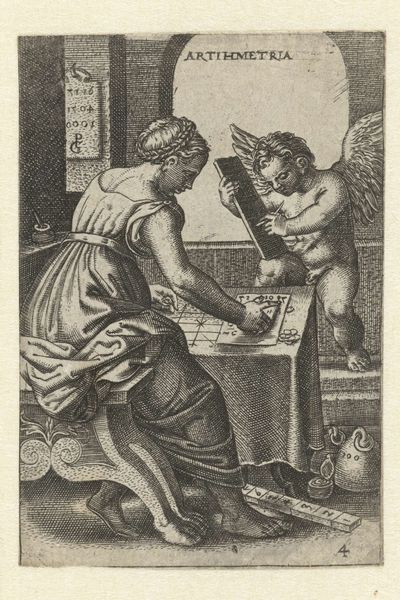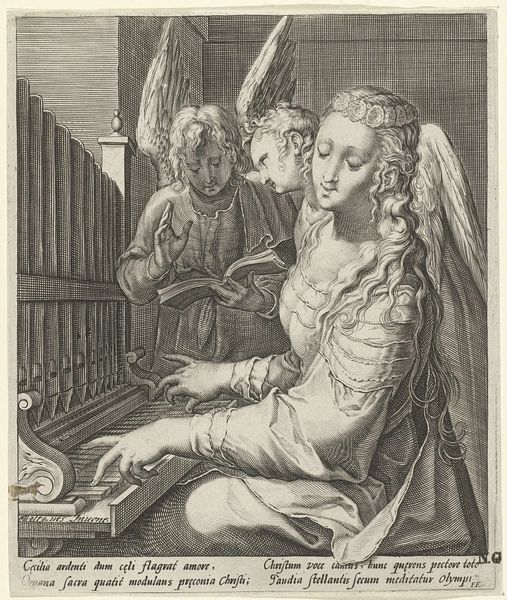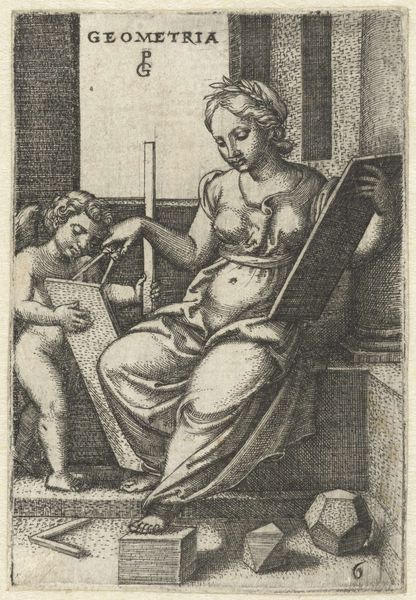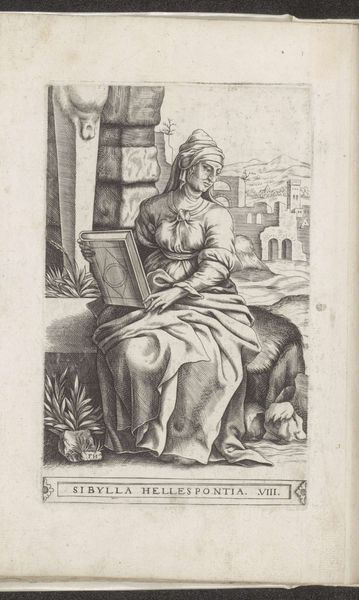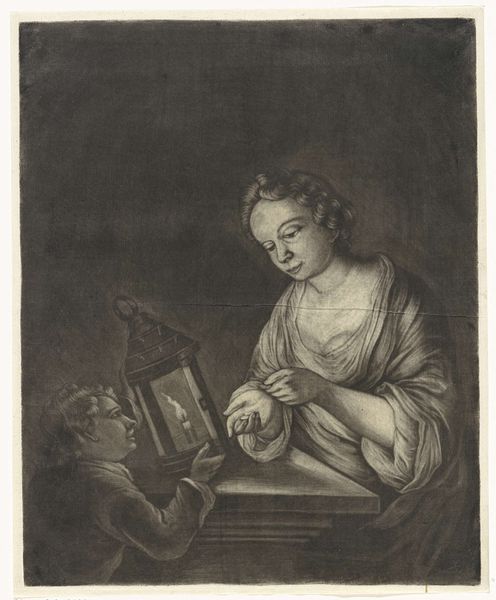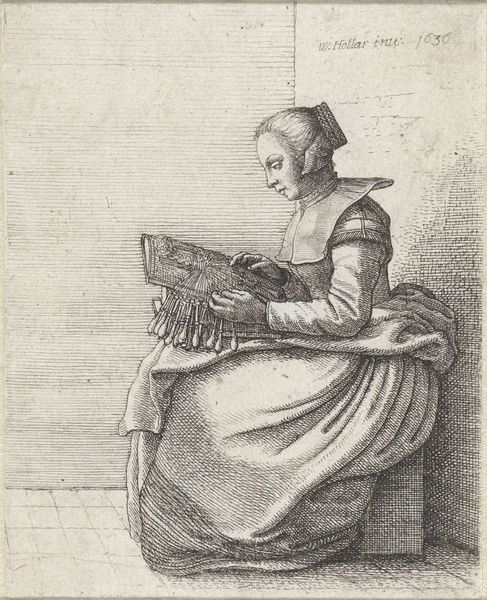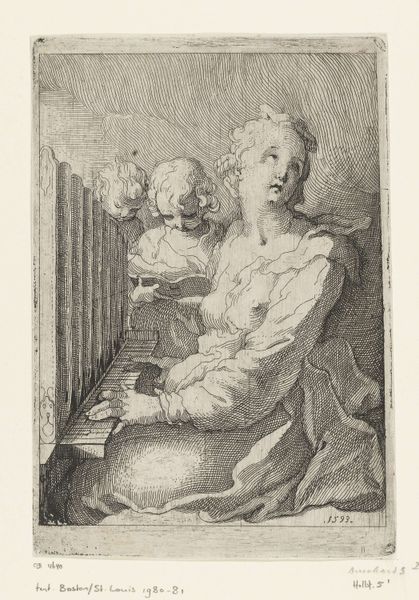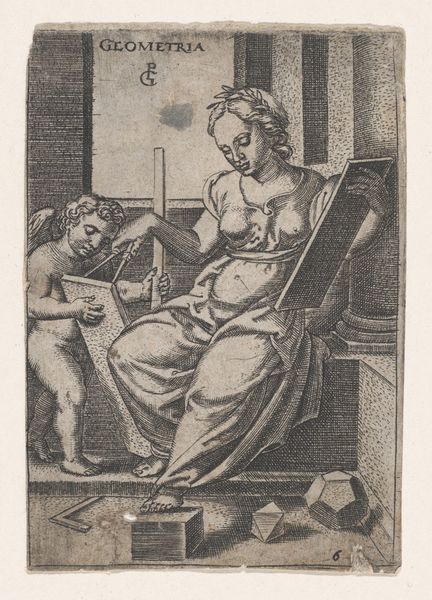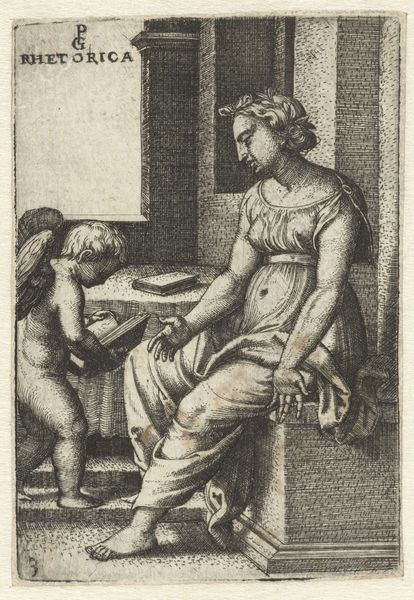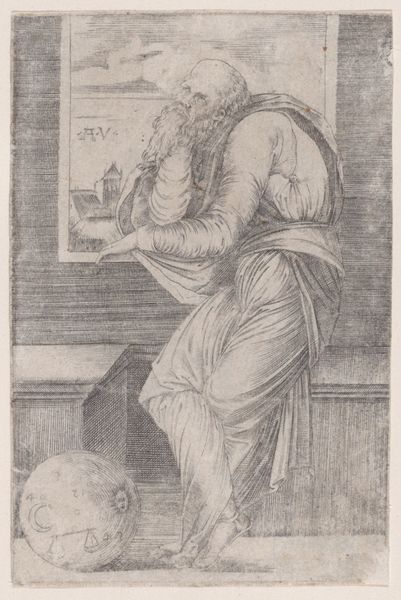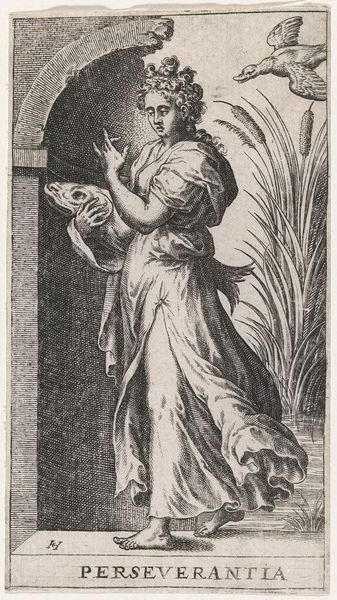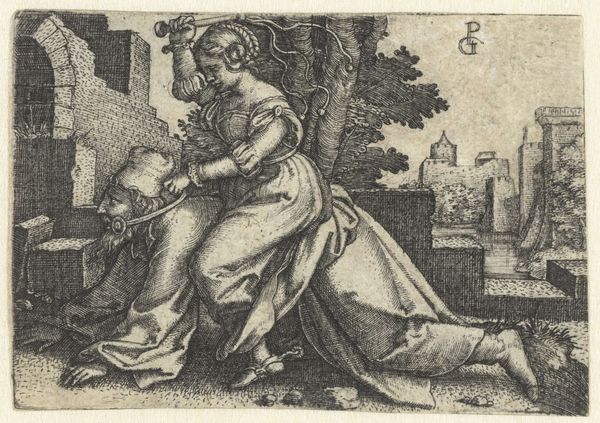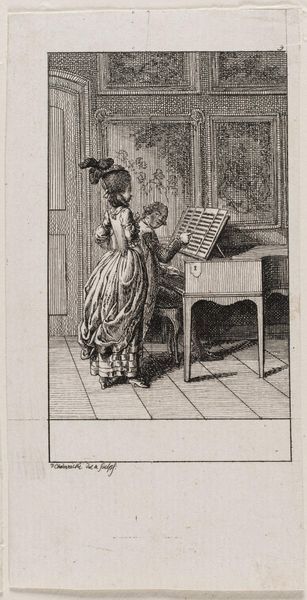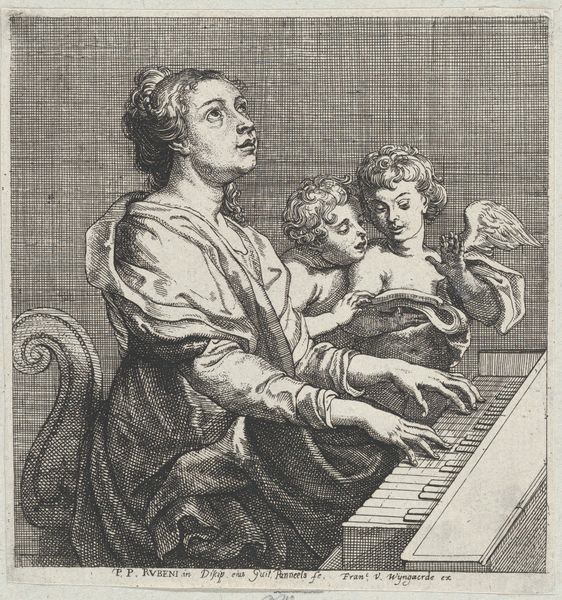
#
light pencil work
#
mechanical pen drawing
#
pen sketch
#
pencil sketch
#
old engraving style
#
personal sketchbook
#
pen-ink sketch
#
pen work
#
sketchbook drawing
#
sketchbook art
Dimensions: height 73 mm, width 51 mm
Copyright: Rijks Museum: Open Domain
Editor: Here we have "Muziek," created by Georg Pencz between 1539 and 1543. It’s currently held here at the Rijksmuseum. The detailed line work gives the piece an allegorical feel. What do you see in this work? Curator: It's interesting to consider "Muziek" within its historical context. During the Renaissance, art often served to reinforce societal hierarchies. How might this image of a woman playing the organ be participating in or perhaps subverting those power dynamics? What does it mean for a woman to be depicted in the act of creating, rather than merely being the object of artistic creation? Editor: That's a really interesting angle. I hadn't thought about the agency the woman has in the piece. It does make you wonder about the intended audience and the message Pencz was trying to convey. Curator: Exactly. And think about the symbolic implications of music itself during that era. Was music seen as a purely aesthetic pursuit, or did it carry deeper connotations related to social status, religious devotion, or even political power? Is the putto beating time alluding to the education required to succeed? The score next to her on the organ and the scrolls by her foot suggest music involved formal study at the time. How accessible would such skills be for different groups within society? Editor: So, by exploring those questions, we can gain a better understanding of how this artwork functioned within the cultural landscape of the 16th century? Curator: Precisely. Art isn't created in a vacuum. Examining the social and political contexts is crucial for understanding its significance. Editor: I see it now, the power structures at play shape the interpretation! Thanks for opening my eyes to it. Curator: My pleasure. It's through these dialogues that we truly uncover the layers of meaning embedded within artworks.
Comments
No comments
Be the first to comment and join the conversation on the ultimate creative platform.
